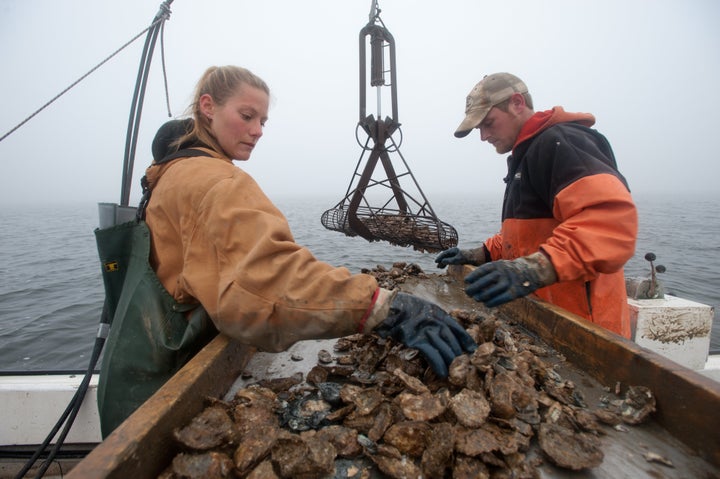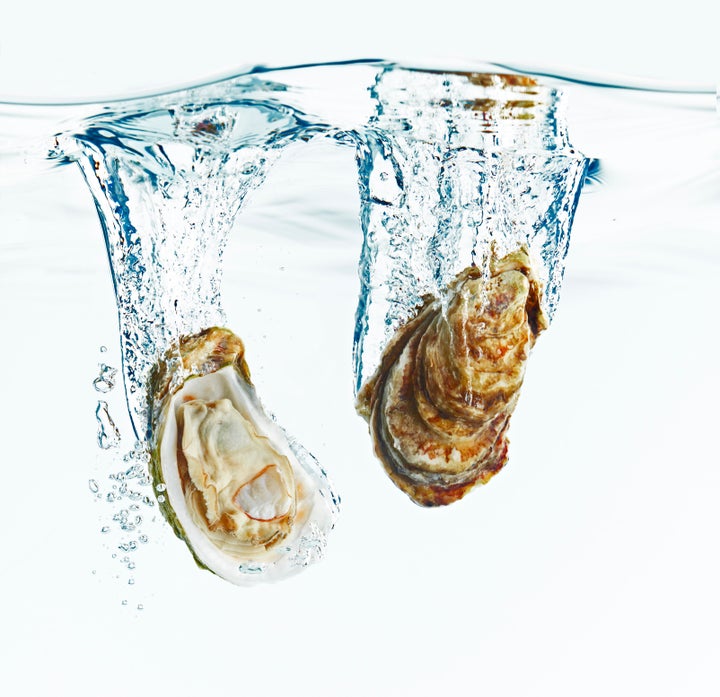As one of the only foods that humans eat alive, oysters may not be for every palate. Still, humans slurp tons of them down with Champagne (naturally) year after year. And whether or not you flee the table when someone orders a plate, we think everyone can agree that oysters are really fascinating. In recognition of National Oyster Day, which falls on August 5, here's some oyster food for thought.
We've been eating oysters for a very long time.
According to midden (ancient piles of shells) found in Dobbs Ferry, New York, we've been eating oysters since at least 6950 B.C., which also represents the oldest evidence of humans ever found in the Hudson Valley.

New York City was oyster paradise.
The cold, brackish waters of New York Harbor were so full of oyster habitats that as many as one million New Yorkers ate oysters every year in the 1920s.
It is said that Pearl Street -- Manhattan's oldest street -- is named so because it was covered with crushed oyster shells when walked on by the Dutch in the 1700s.
As tends to happen, overharvesting destroyed many of New York's reefs of wild oysters. According to the New York Times, "Atlantic oyster culture fell to just one percent of its historical capacity by 1970."

The Oyster Bar in Grand Central Terminal, New York City.
Oysters live a long time.
Most oysters can live up to 20 years in captivity.
And change their gender.
Some oysters, such as Eastern, change their genders based on environmental, nutritional, and physiological stresses, and sometimes annually. They start out and mature as males, but will change to female later and sometimes reverse again. Some studies show that oysters will go back to being male when near females.

Slurping is the wrong way to do it.
Of all the ways to eat oysters, it turns out slurping is the wrong way to do it. Bon Appetit polled several oyster chefs who say that real oyster enjoyment happens when you treat it like wine: smell it first, pour it into your mouth with its "liquor," or juice, and chew two-to-three times.
They are (maybe) an aphrodisiac.
This is a debated oyster fact, but due to their high zinc content, many people like to think oysters will rev up your libido. And sometimes, the idea is all we need. The truth is, a zinc-deficient diet can not only lead to impotence, it can cause hair loss and acne.

Shells are great for gardening.
After your night of oyster-binging, save the shells and crush them up for your garden. The shells help neutralize the acidity in the soil, as well as help with drainage and an even release of calcium through the growing season, according to Gardenista.
Oysters take in a lot of water.
Because oysters are filter feeders, eating phytoplankton that passes through their gills, and cleaning the water in the process -- each oyster filters about 30 to 50 gallons of water every day.
Because of this, beware the bad oyster.
If the oyster you're about to swallow is infected with vibrio vulnificus, a bacterial microorganism found in seawater, you could be in for a long night of vomiting, diarrhea and abdominal pain. It isn't common -- about 900 cases were reported between 1998 and 2006 in the Gulf Coast region, according to Newsweek -- nor is it too serious. Doctors usually treat it with antibiotics.

They have colorless blood and kidneys.
Oysters have three-chambered hearts that pump colorless blood (or hemolyph) throughout their bodies, -- and because they filter their food and reject foreign objects, those which are Ostreid don't produce pearls (pearl-producing oysters are Pterioida, a different kind altogether).
Also on HuffPost:
